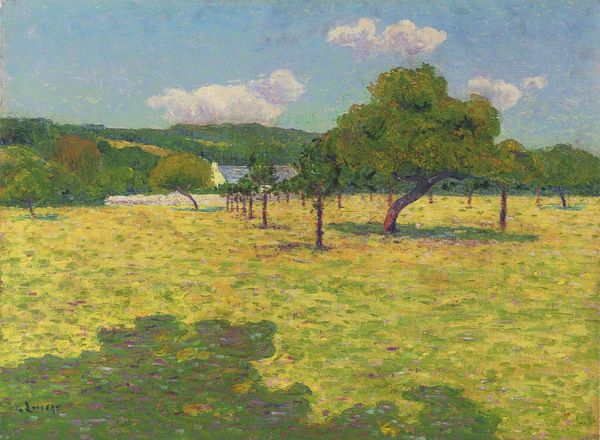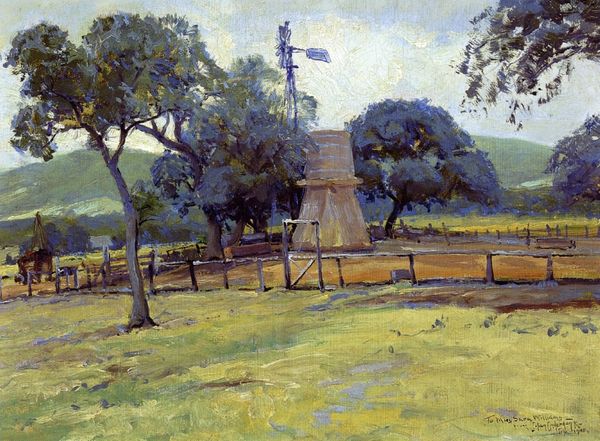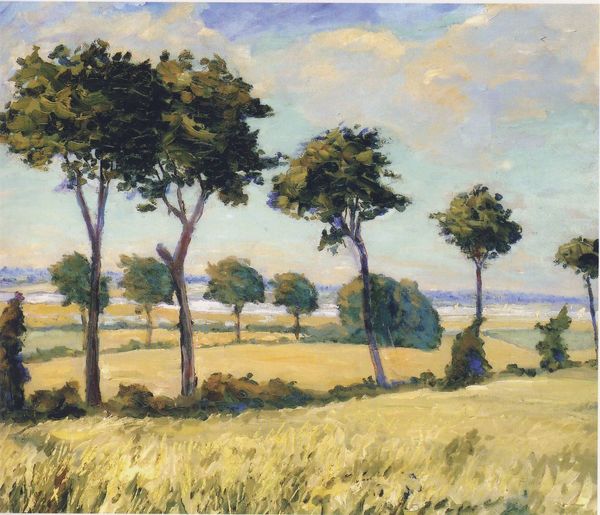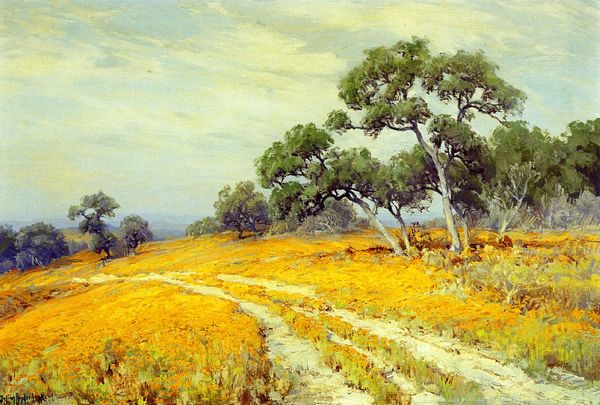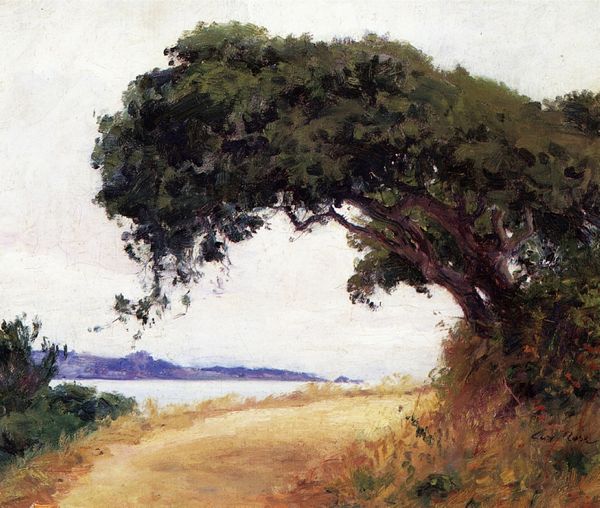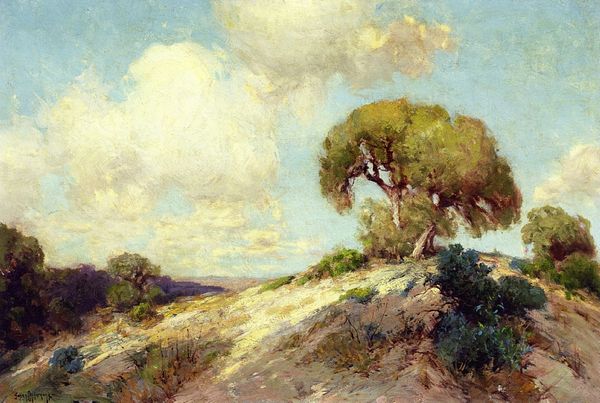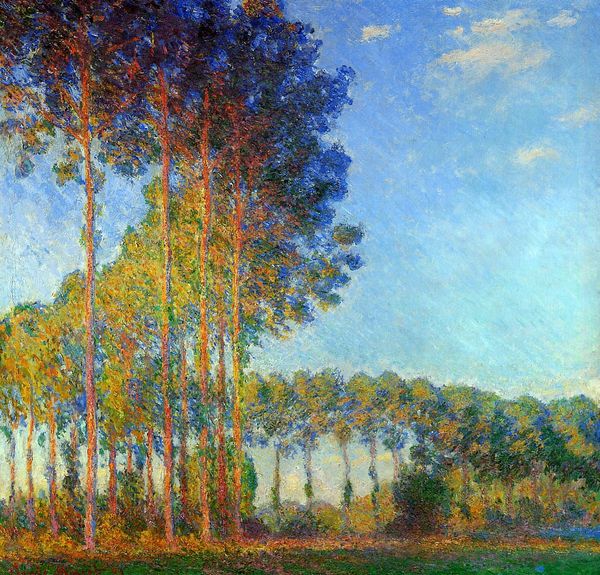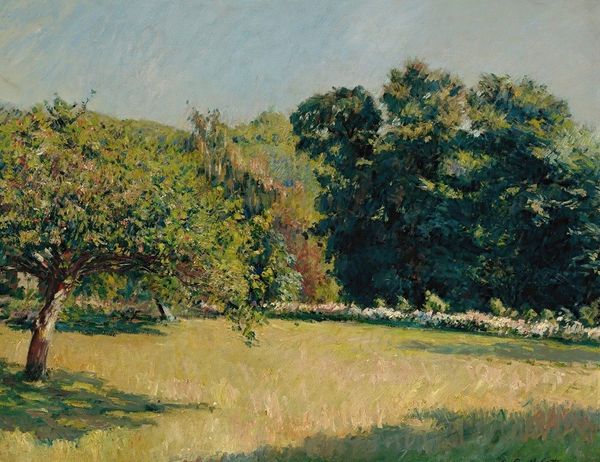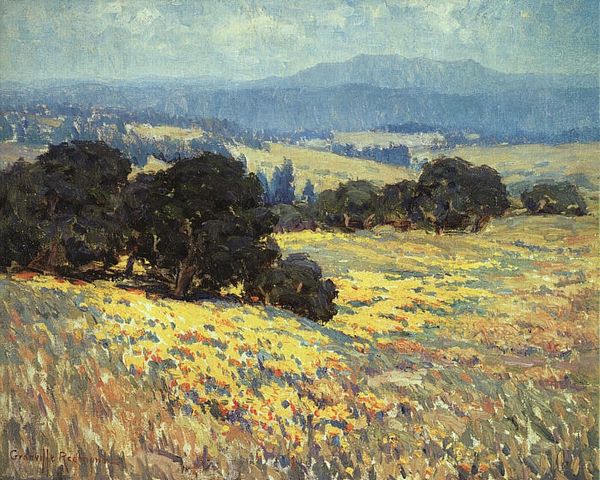
Copyright: Public domain
Editor: Here we have Robert Julian Onderdonk's "Live Oak Trees on Williams' Ranch, Bandera County," painted in 1915 with oils, likely en plein air. It's such a tranquil scene. What can you tell me about it? Curator: It's fascinating to consider the labor involved in creating this scene, particularly the extraction and processing of the raw materials for the oil paints themselves. Where did Onderdonk source his pigments? How were they ground and mixed? This "simple" landscape implicates a complex network of global trade and industrial processes, even pre-dating widespread synthetic pigment production. Editor: So you’re focusing on how the paint was made rather than the scenery? Curator: Not exclusively, but consider the socio-economic context. Texas in 1915 was largely agrarian. The very presence of industrially produced paints speaks to a shifting landscape, literally and figuratively. Even the fence in the painting — a product of human labor and resource extraction – highlights the imposed order on the natural landscape. What did “landscape” mean at this time? Editor: I suppose it wasn't just about pretty trees, but land as property, resources, even power? Curator: Precisely! And the act of painting "en plein air"–while seemingly romantic–demands the materials be transported to the site, implicating logistics, transportation, and access, influencing who gets to create and consume such images. We are compelled to reflect on whose narratives dominate artistic representation and the impact on local cultures. Editor: I hadn't thought about it that way. Now the painting feels less serene and more like a document of resource transformation. Curator: Exactly. By questioning the means of production, we unveil the material underpinnings of seemingly straightforward landscapes. Editor: I appreciate your insight; you've given me so much to think about. It's more than meets the eye at first glance.
Comments
No comments
Be the first to comment and join the conversation on the ultimate creative platform.
